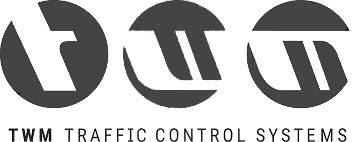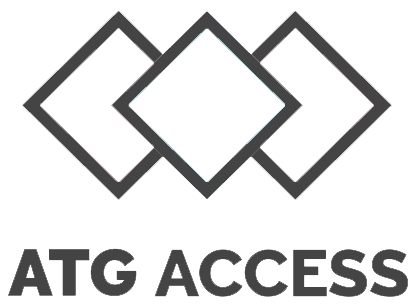Altimex delivers high-reliability printed circuit boards (PCBs) for telecommunication applications, backed by industry-specific certifications and comprehensive end-to-end manufacturing solutions.
Telecommunication PCB Applications We Can Serve
At Altimex, we manufacture high-reliability PCBs tailored for the demanding needs of modern telecommunications infrastructure. Our engineering and production processes ensure dependable performance in high-frequency, high-bandwidth, and mission-critical environments.
From core network systems to edge devices and wireless communication platforms, whether you’re building 5G infrastructure or developing next-gen broadband technologies, we provide trusted circuit board solutions for:

Networking Switching and Routing Equipment

5G and Wireless Communication Systems

Fibre-Optic Transmission Systems

Signal Processing and RF Front-End Modules

IoT and Edge Computing Devices

Data Centre and Server Infrastructure

Telecom Power and Control Systems

Base Station and Antenna Interface Units
Why Work With Altimex?

25+ Years Of Experience

Fast Turnaround Time

Tailored
Solutions

Building Long-Term Partnerships

Certified & Experienced Team
Types of PCBs We Can Manufacture for the Telecommunication Industry
At Altimex, we have the ability and expertise to manufacture a wide range of PCBs for telecommunication applications.
Flexible PCB
Designed for tight enclosures and dynamic use cases, flexible PCBs offer telecommunications equipment enhanced durability, vibration resistance, and space-saving versatility. These are ideal for mobile and compact networking devices.
Custom PCB
Altimex develops bespoke PCBs to meet precise telecommunications specifications, ensuring optimal signal performance, reliability, and full compliance with industry standards such as IPC and Telcordia.
Multilayer PCB
Ideal for complex telecom systems, multilayer PCBs support high-density circuit design, EMI shielding, and superior signal integrity. They are essential for high-speed data transmission and advanced network equipment.
Double-Sided PCB
Offering greater circuit complexity in a compact footprint, double-sided PCBs are perfect for telecommunications gear such as routers, modems, and RF communication modules.
Single-Sided PCB
Cost-effective and dependable, single-sided PCBs are well-suited for simpler telecom applications where consistent performance and stringent quality control are still required, such as basic signal interfaces and control units.
Interested In Telecommunication PCBs?
Get in touch with us and a member of our team will reach out to you.
Either use the contact form on our website or call us on +44 1829 741262

Why Are PCBs Important to Telecommunications?
Printed Circuit Boards (PCBs) play a crucial role in telecommunications, powering everything from network infrastructure to mobile devices and data transmission systems. These boards must be highly reliable, as they operate in demanding environments with continuous data flow, high frequencies, and tight thermal and space constraints. That’s why precision and quality are essential in their design and manufacture.
A well-made PCB ensures that communication networks function efficiently and without interruption. In short, without high-quality PCBs, modern telecommunications technology simply wouldn’t be possible.
Proud to have worked with










Bespoke Telecommunication PCB Capabilities
At Altimex, we understand that every telecommunications project has its own challenges and requirements. That’s why we offer bespoke PCB solutions designed specifically for your application. From complex multilayer boards to flexible designs, we use advanced materials and precision manufacturing to ensure your PCBs deliver reliable performance in high-speed, high-frequency environments.
Whether you need a prototype or a full production run, we collaborate closely with you at every stage to ensure your boards meet all relevant industry standards and technical specifications.
Get In Touch Today For Telecommunication PCBs
If you have a query about our services or feel like we could help you, please get in touch by filling the form out below or by calling us on 01829 741 262.
Frequently Asked Questions
Telecommunication systems require PCBs that can handle high frequencies, continuous operation, and minimal signal loss. Poor-quality boards can lead to signal degradation, dropped connections, or even equipment failure. High-quality PCBs ensure stable transmission, reduced electromagnetic interference (EMI), and reliable long-term performance. With the increasing complexity of modern telecom systems, especially in 5G and data centres, PCB quality directly affects network uptime and user experience.
Telecom equipment often uses multilayer, double-sided, and high-frequency PCBs. Multilayer PCBs allow for dense circuitry, ideal for routers and signal processors. Double-sided PCBs are used in compact devices requiring moderate complexity. High-frequency PCBs, made with specialised materials like PTFE or ceramic-filled substrates, are essential for RF and microwave applications. Flexible and rigid-flex PCBs are also becoming more common in telecom due to space constraints in mobile and wearable devices.
High-frequency PCBs are designed to minimise signal loss, distortion, and EMI at high data transmission rates. These are critical in telecom systems like mobile networks, satellite communication, and RF modules. Their low dielectric constant and controlled impedance ensure accurate signal propagation, making them ideal for 5G and other high-speed protocols. Without high-frequency PCBs, modern telecom networks would struggle to maintain the required signal integrity and performance.
Materials for telecom-grade PCBs must support high-frequency signals and thermal stability. Common substrates include FR-4 (for standard needs), PTFE, Rogers, and ceramic-based laminates for RF and microwave applications. These materials offer low dielectric loss, stable performance across temperature ranges, and superior signal integrity. Copper foils with various weights are also chosen based on current-carrying requirements. Selecting the right material ensures the PCB can meet the performance and reliability demands of the telecom environment.
PCBs in telecommunications are engineered for higher reliability, signal integrity, and longer operational lifespans compared to those in typical consumer electronics. They often use specialised materials, tighter tolerances, and more complex multilayer designs. Telecom boards must also comply with stringent industry standards, support continuous 24/7 operation, and resist environmental stressors such as heat and EMI. In contrast, consumer electronics may prioritise cost-efficiency and ease of assembly over long-term performance.
Designing PCBs for telecom applications involves managing high-speed signal routing, minimising crosstalk and EMI, and maintaining thermal control. Engineers must carefully consider impedance matching, grounding, and layer stack-up to ensure reliable data transmission. Additionally, space constraints in compact equipment, evolving communication standards, and the need for high durability all contribute to design complexity. The growing adoption of 5G and IoT only adds to these challenges by increasing frequency and density requirements.
Yes, flexible PCBs are increasingly used in telecommunications, especially in compact and wearable devices, antennas, and modules with space constraints. Flex PCBs allow for three-dimensional assembly, reducing connectors and improving reliability. They are also more resistant to vibration and bending, which is useful in mobile and rugged communication equipment. Rigid-flex designs combine the strength of rigid boards with the adaptability of flexible circuits, making them suitable for innovative telecom product designs.

